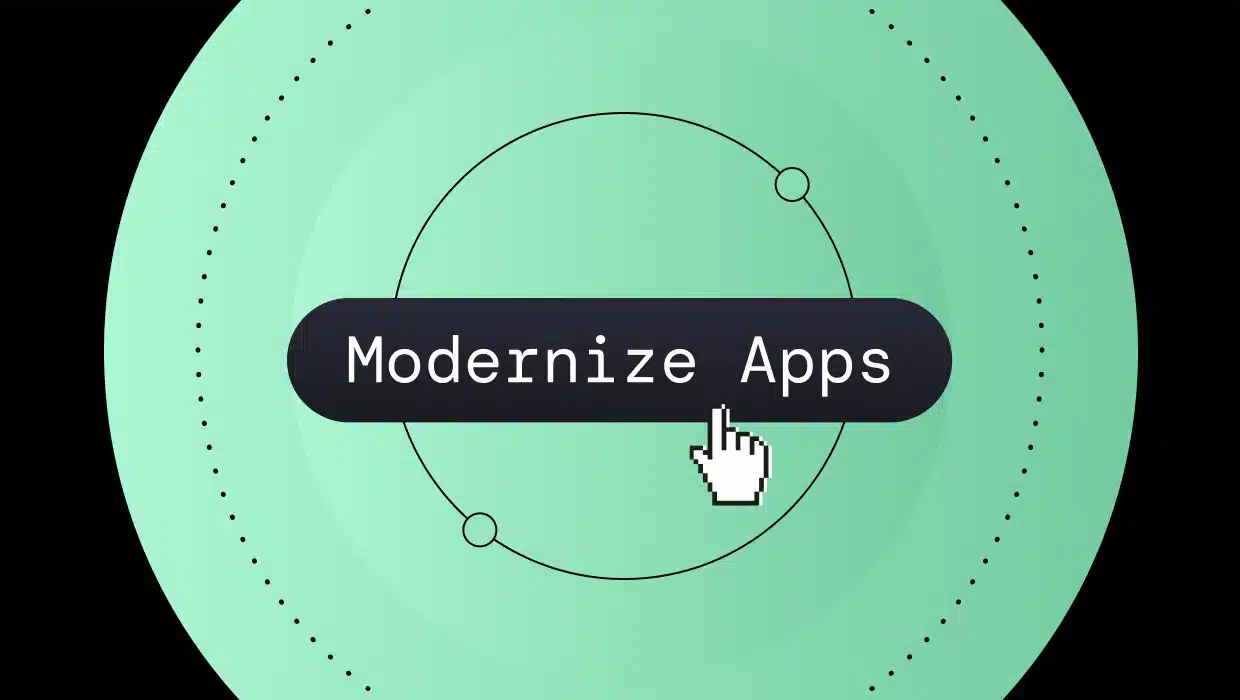There comes a time when every organization will no longer be able to rely on its legacy apps for efficient business operations. Large monoliths, local server-based storage, and other factors can result in the need to migrate to a more modern solution. It’s why according to IBM, 83% of IT executives believe that app modernization is critical to building and executing business strategies.
Understanding exactly how you want to modernize your apps has to be part of the equation. The right code refactoring tool can play a major role in that process. Refactoring, of course, describes the process of restructuring your code into a more modern solution while keeping the external behaviors and functionality the same.
Refactoring lies at the center of the continuum between simply porting your app to a new system like the cloud and rebuilding it from scratch. It brings significant benefits, like reducing complexities and making the code more agile while maintaining continuity for end users.
But while the benefits of refactoring are undeniable, they’re far from guaranteed. Embracing the process itself is not enough. In fact, approaching the concept without the right tool brings significant challenges. We’ll dig into those challenges below, then discuss five benefits that working with a code refactoring tool can bring to your organization.
The Challenges of Modernization without Code Refactoring Tools
Without the right tools, code refactoring becomes a largely manual process. That, in turn, results in some challenges that any organization looking to modernize its app infrastructure has to keep in mind:
- Manual refactoring is complex almost by definition. It requires a comprehensive inventory of functionality, creative ideas on how to modernize the code leading to that functionality, and extensive work to build that new code. The high labor time required will be a significant, long-term business expense for the organization.
- Manual refactoring also requires niche expertise. Even the best developers may simply not be used to this type of work, requiring significant training or on-boarding as a result.
- The time, investment, and expertise required for manual refactoring take away from building new features that can benefit your business. Your best resources will be focused on the modernization effort, which could affect your business operations and competitive value.
- Finally, manual refactoring can become a significant drain on developer productivity. Team members focused on this task may find it less useful than building new features, ultimately causing them to look for better opportunities outside of your organization and hurting your talent retention.
The extent of these challenges, of course, varies by organization. But at their core, they remain in place with any type of manual refactoring effort. It’s why a lack of proper tools tends to be among the most common challenges developers cite when looking to modernize their legacy code.
5 Benefits of the Right Refactoring Tools for Your Organization
On the other side of the equation, finding the right tools to aid in your refactoring process can become a major boon for your operations and business. In fact, code refactoring tools can help reduce architectural tech debt, improve scalability, decrease cloud costs, increase developer productivity, and accelerate the entire refactoring process.
- Reduction of Architectural Tech Debt
Architectural tech debt is a hidden cost that cannot be underestimated. A deteriorating and low-quality architecture results from focusing on speed over quality. By focusing on more urgent issues and functionality or simply failing to recognize underlying issues that need to be fixed, developers who are not mindful of tech debt may create more long-term problems, costs, and work.
Code refactoring tools can play a major role in reducing the likelihood that tech debt will occur or continue to grow. That’s because the right architectural observability solution can create a more comprehensive and structural understanding of the code to be refactored, offering a more dynamic perspective of the best and most efficient ways to undertake the refactoring. It can also build improvement and refactoring processes that reduce architectural tech debt and continually improve the code over time.
- Improved Scalability
Closely connected to the first point, refactoring tools—especially when the refactoring process leads to a transition to microservices—can play a significant role in building more scalable app solutions for the organization. Breaking down a monolithic infrastructure into microservices while conserving core functionality builds agility, making it easier to scale the apps as needed at any point.
More specifically, code refactoring tools can help with scalability by automating critical pieces of the process. For example, an architectural observability platform can analyze the entire application architecture, individual domains, and sources of cross-domain pollution.
This analysis helps identify optimal points for initiating the refactoring process. Importantly, this assessment is continuous, allowing the team to consistently pinpoint technical debt, architectural drift, and other issues in an efficient and scalable manner.
3. Decreased Cloud Costs
Moving to microservices enables your organization to scale its apps horizontally, building a cloud-based architecture that utilizes all of your cloud resources with maximum throughput. Working with the right refactoring tool can help to decrease those cloud costs even further. A dynamic move to microservices can now be done with a cloud-native architecture at the forefront, identifying optimal ways to leverage your cloud resources while minimizing architectural debt that might otherwise take up those resources. Cloud bills become less bloated, ultimately minimizing your costs without compromising functionality.
4. Increased Developer Productivity
In user-facing applications, UX has long become a major determining factor of success. But not enough attention has been paid to the Developer Experience (DX)—the process of improving productivity by improving the developer’s work environment. Developers who spend too much time with red tape, non-task-focused activities, or bottlenecks will become frustrated, less productive, and less likely to stay.
A positive DX, on the other hand, can lead to increased talent attraction and retention, greater quality work, and better productivity. Code refactoring tools can contribute to that environment by taking care of the research, analysis, and tasks underlying the process, enabling developers to focus on the more strategic, tech-forward tasks instead, along with the ability to build new features.
5. Accelerating the Refactoring Process
Finally, it’s difficult to overstate just how much time development teams can save with code refactoring tools that build automation capabilities into the app modernization process. The difference in moving to a system with automation built into the process changes the time and resources required to the point where refactoring can become an ongoing process rather than a one-time “big bang” move.
For example, the right tool can help define the domains and sharpen the boundaries that allow them to be more easily extracted into microservices. It can generate RESTful APIs, upgrade frameworks, and analyze old and new code for technical debt. Most importantly, it can create iterative processes that treat refactoring as continuous improvement, accelerating the first, second, and fifth time improvements are needed in the architecture.
What to Look for in a Code Refactoring Tool
All of the above benefits are only theoretical in nature. You need the right tool to accomplish them, one with the capabilities that enable your team to actually save time, decrease costs, improve productivity, and minimize tech debt. That core functionality includes:
- Domain visualization to analyze your current architecture and build a new microservices infrastructure
- Automated refactoring capabilities, enabling the tool to refine service boundaries, refactor classes, and assign code to common libraries
- Automated extraction of identified domains into new microservice code Dynamic reports that can detect and suggest a to-do list and solutions for architectural tech debt and architectural drift that could lead to long-term issues and costs
- Process standardization so that every future refactoring process follows the same, repeatable, and optimized steps
- API generation that enables microservices to integrate with each other and any outside sources to continue optimizing architecture efficiency over time
- An architect-driven interface that makes it easy for teams to leverage the software to its maximum benefit, improving developer experience as a result
Finding a code refactoring tool that shares all of these features is no easy feat. Many solutions may offer some, but not all of this functionality, which can reduce the level of benefit they offer for both organizations and development. The more comprehensive, and the more of these features are present in the tool you examine, the better.Ultimately, code refactoring is at its best with a reliable, comprehensive architectural observability solution by your side to automate the right pieces of the process while maintaining strategic input and oversight at all times. Learn how vFunction has helped organizations optimize their refactoring efforts by requesting a demo today.







